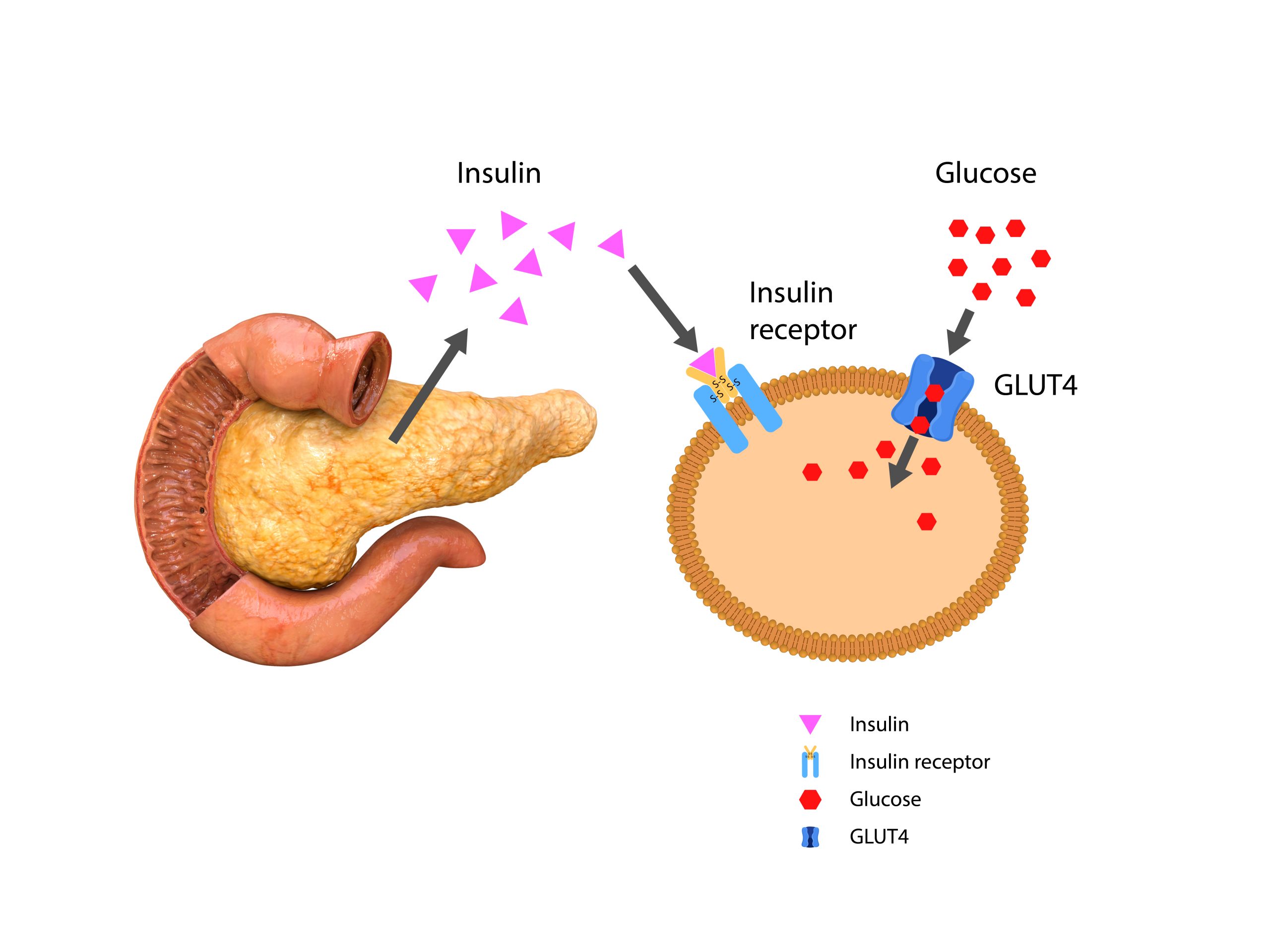Articles

Insulin Resistance
Everything you need to
know about insulin resistance and how to manage it.
What is Insulin?
Insulin is one of the
most important hormones in the body, produced by the pancreas.
Functions of
Insulin:
- Maintains normal blood glucose levels
- Plays a role in the breakdown and storage
of fats and proteins
Difference Between
Insulin Resistance and Type 2 Diabetes
|
Insulin
Resistance |
Type 2 Diabetes |
|
The pancreas
produces enough insulin, but cells respond poorly to it |
The pancreas does
not produce enough insulin, but cells still respond to it |
What is Insulin
Resistance?
Insulin resistance is
a condition in which cells do not respond normally to insulin. As a
result, the pancreas produces more insulin to keep blood glucose levels
within normal range. This leads to a state known as hyperinsulinemia
(excess insulin in the blood).
How is Insulin
Resistance Diagnosed?
Through the HOMA-IR
test, which uses:
- Fasting blood glucose
- Fasting insulin level
Formula:
HOMA-IR = Insulin (μIU/mL) × Glucose (mg/dL) / 405
|
Result |
Interpretation |
|
0.5–1.4 |
Normal |
|
>1.9 |
Early insulin
resistance |
|
>2.9 |
Significant insulin
resistance |
Risk Factors for
Insulin Resistance
Higher-risk
individuals include:
- Overweight or obese individuals
- Those consuming high-calorie, high-carb
diets
- Women with PCOS (Polycystic Ovary
Syndrome)
- Individuals with Cushing's Syndrome
Other Contributing
Factors:
- Fat accumulation around the pancreas and
cells
- Elevated insulin levels
- Increased inflammation
- Genetic predisposition
Symptoms of Insulin
Resistance*
(Often appear in
more advanced stages)
- Fatigue
- Increased hunger
- Poor concentration
- High blood pressure
- Elevated cholesterol levels
- Weight gain (especially around the
abdomen)
Potential
Complications
If left untreated,
insulin resistance can lead to:
- Type 2 Diabetes
- Heart disease
- Non-alcoholic fatty liver disease (NAFLD)
How to Manage
Insulin Resistance
The most effective
way to manage insulin resistance is through lifestyle changes, such
as:
- Adopting a balanced, healthy diet
- Following a weight-loss plan if overweight
- Engaging in a suitable exercise routine
- Quitting smoking
- Reducing sugar intake
- Managing stress
- Getting enough sleep
General Nutrition
Guidelines
- Focus on a low to moderate glycemic
index (GI) diet
- Eat 4–5 servings of vegetables and 2–3
servings of fruit daily
- Limit fast food
- Reduce saturated fats and hydrogenated
oils
Physical Activity
Tips
- Use stairs instead of elevators
- Park further away and walk
- Choose group or family activities like
cycling or soccer
- Try at-home exercises like jumping rope
Glycemic Index
Overview
Foods are classified
based on their GI:
- Low GI (≤55) – Minimal impact on blood sugar
- Medium GI (56–69)
- High GI (≥70) – Rapid rise in blood sugar
Low GI Foods: Quinoa, oats, bran bread, lentils, sweet
potatoes (boiled), cooked beans, milk, oranges
Medium GI Foods: Couscous, pineapple, ice cream, rye bread, grapes,
beets, oat cake, mango, berries
High GI Foods: White bread, bagels, fried or mashed potatoes,
watermelon, white cereals, honey, soda, instant rice/pasta
